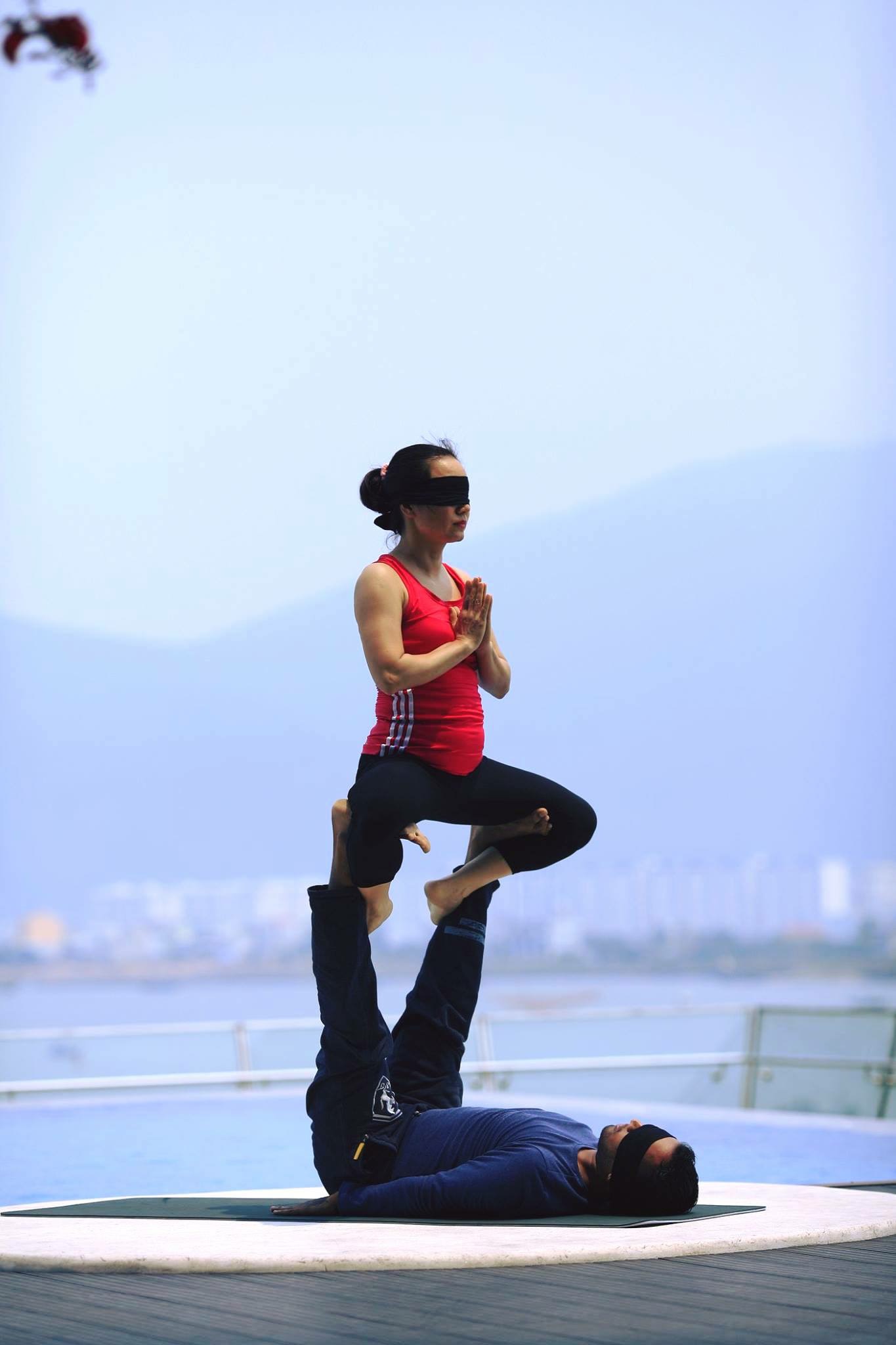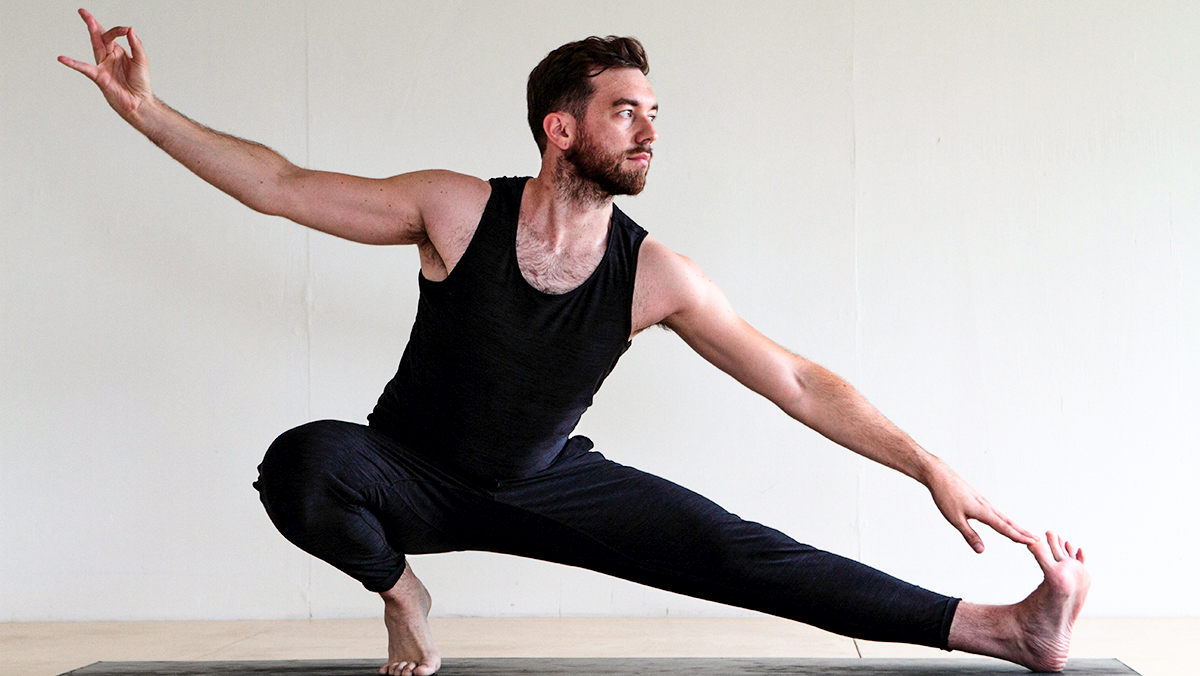
Running poses can be an excellent addition to yoga. They can strengthen and stretch leg muscles and prevent injury. Runners should practice these poses at least once per week to see results. These are some of the most common variations. Read on to find the right one for you. This article will give you the basics of yoga for runners. Here are some tips to help you get started. Finding a teacher who specializes is yoga for athletes is the best way to get started.
Runners often have tight muscles and tend to push themselves into advanced poses. They should avoid over-stressing their muscles by performing simple forward rolls. You can address all your unique needs with a basic hamstring stretching program. No matter your age, no matter what level you are, there is a yoga pose that will suit you. Poses can also be practiced with props. To start, try some of these poses. These will help you relax your hamstrings.

If you enjoy running, try yoga for runners. Stretches will improve your posture as well as your ability focus. You will be able to tune out negative thoughts and stay calm when you are stressed. Yoga can boost your self-confidence. This will enable you to perform at the highest level. Yoga can also help you concentrate better. Yoga can help you strengthen your muscles as well as improve your performance. Try these stretches to maximize your workout.
Runners yoga is designed to improve your flexibility and help you recover from a long run. The sequences are designed specifically for runners, to increase flexibility in your lower body. It improves flexibility and joint health and promotes a balanced posture. It emphasizes body awareness and the quads, hipflexors, as well as the psoas. It is recommended that beginners begin with high-quality, free yoga.
Yoga for runners can increase flexibility and lengthen the hamstrings. It can help prevent injury. It can be an excellent post-run workout. It can speed up recovery and relieve sore muscles. Yoga is great for runners. It can prevent injuries and improve your stamina. This can be combined with regular exercise. It will improve your energy level and keep you running better.

The runner pose is essential for improving flexibility. These exercises will improve mobility, strengthen your muscles, as well as promote recovery after a run. Runners should practice Hatha Yoga, which is the simplest form. This class will not push your body too far, but focus on movement and breathing. A beginner class is the best option for you. It's not as difficult as you think.
FAQ
How many times a week should I exercise?
It depends on how much time you have available and what type of exercise you prefer. The general rule of thumb is to exercise aerobically 3 - 5 days per week. It is important to not overdo it. To get the best results from your exercise, it is important to be consistent.
Which exercises work best for you?
It really depends on the type of fitness goal you have. Some people concentrate on endurance activities such running, cycling, swimming. Others prefer lifting weights, or using resistance bands. There are many types and styles of exercise available today. You can choose the one that best suits you.
How to Build Muscles Fast
Fast muscle building is possible by eating healthy foods and regularly lifting weights.
The best time to work out is early morning when you are fresh and ready for action!
Exercises such as push-ups and bench presses are good options.
Take a look at different weight training options and make sure to drink plenty of fluids throughout the day.
Is Cardio Better Than Strength Training?
Both are equally great. However, cardio is more effective if you're looking to bulk up faster.
Cardio burns far more calories per min than strength training. It also burns fat more efficiently.
Strength training increases muscle mass but takes more time than cardio.
How many calories should you consume each day?
It varies from one person to another. On average, between 2000 and 2500 calories a day. Based on your age, gender, height and activity level, you will need to calculate how many calories you require.
What is a good schedule for a 7-day work out?
A seven day exercise program should include cardiovascular training (running or biking), strength exercises (using freeweights, weight machines) and one flexibility/core workout. It's essential to do each activity at least once a week. Each session should not last more than 45 minutes.
Cardiovascular Exercises: Swimming, Cycling, Running
Aim to do at least 60 minutes per week of cardio. To achieve the best results, aim to exercise for at least 75 minutes each week. Cardio exercise can improve blood flow and stimulate muscle development.
Strength Training
Cardio exercises target your heart and lungs. Strengthening your muscles and bones is the opposite. Strength training can help you burn calories even when you're not working out.
Flexibility & Core Workouts
You can strengthen your entire body by strengthening flexibility and core exercises. Yoga and Pilates are both excellent choices.
Is there any benefit to doing yoga?
Yoga has been popular since ancient times. It is now very popular among celebrities and even ordinary people who want to look fit and healthy.
Yoga is great because it strengthens your muscles as well as stretches them. It can help you relax and calm down.
Yoga is more focused on breathing than other forms of exercise.
To improve your balance and flexibility, you can try different poses.
Statistics
- By John Thompson Take a whopping 38% off a set of PowerBlock Pros. (menshealth.com)
- Candidates and applicants must pass all four tests at 70% (minimum level) to graduate from Basic Deputy U.S. Marshal (BDUSM) Training. (usmarshals.gov)
- Cardmembers earn 5% Back at Amazon.com with a Prime Credit Card. (amazon.com)
- Are You One of the 20% of Guys (mh.co.za)
- According to the American Heart Association, blood pressure should be checked at least once every two years, beginning at age 20. (my.clevelandclinic.org)
External Links
How To
How can a man be fit in only 30 days?
Breaking down fitness goals into manageable steps will help you reach your fitness goals.
Every day, you must work towards your goal. This could be anything from running 3km to doing 10 pushups in 5 minutes.
Consistently doing this will lead to positive results.
The key thing here is consistency. Keep at it until success!
What is the difference between Aerobic Fitness and Anaerobic Fitness?
Anaerobic fitness is the ability to do intense physical work without oxygen. Anaerobic pathways are used to give our bodies enough energy to perform high-intensity exercise. Anaerobic pathways include glycolysis and creatine phosphate.
Aerobic fitness, however, refers to the continuous practice of low-intensity aerobic exercise. Aerobic exercise is a form of aerobic exercise in which oxygen is the primary fuel source for the cells. In other words, the aerobic pathway provides more energy than the anaerobic pathway.
You need to build up your aerobic capability if you plan on running a marathon. If you are only focusing on increasing your anaerobic capabilities, you won't finish the race.
Aerobic fitness is also known as cardiovascular fitness. Step tests and VO2 max testing are the most popular methods to measure cardiovascular fitness.
VO2 Max Testing
The maximum amount of oxygen (O2) the body can use during exercise is called VO2 max. This test measures the body's ability to use O2 while exercising.
This test measures cardiovascular fitness in a way that is most accurate. However, it requires expensive equipment and highly trained professionals to administer the test.
Step Tests
Step tests are a quick and easy way to test your cardiovascular fitness. You will be asked to walk, jog or run for a specific time on a track. This is based on your age or weight.
These tests cost little, are quick and simple to do, and can be carried out almost anywhere. For instance, you can walk on a treadmill for 2 minutes, rest for 1 minute, repeat this process for 20 minutes, and then stop. Your heart rate should remain within a specific range throughout the whole session.
This method is called the Bruce Protocol. Bruce, himself a runner developed this protocol when he realized his heart rate didn't rise when he ran long distances.